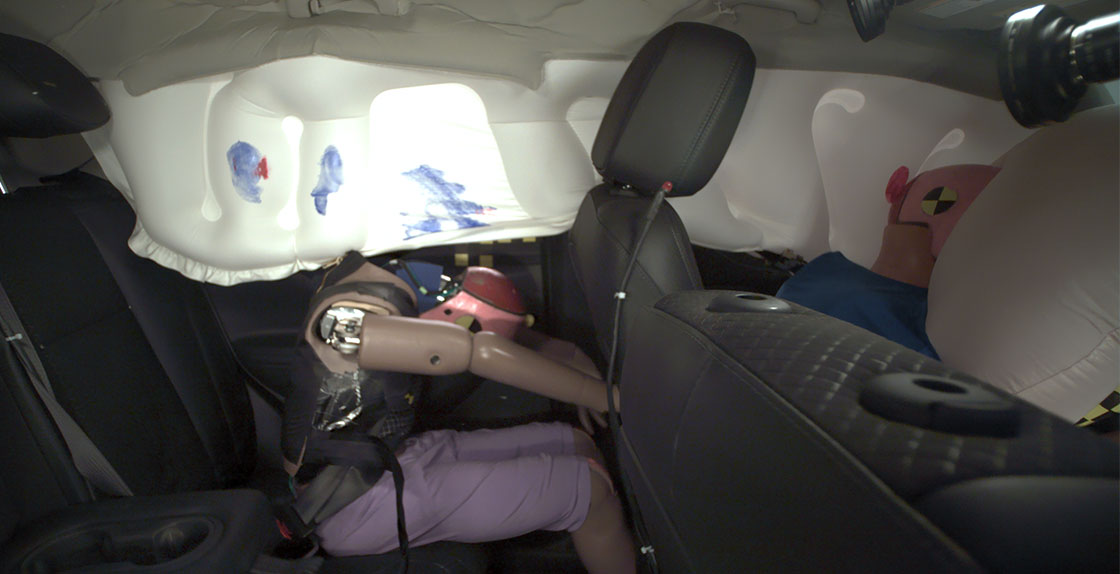The Insurance Institute for Highway Safety (IIHS) is updating its longest-running crash test, the moderate overlap front evaluation, to address a growing gap in the protection provided for front and rear occupants, the organization announced.
In the first tests, only two out of 15 small SUVs, the Ford Escape and Volvo XC40, protect the rear occupant well enough to earn a good rating, the IIHS said.
“The original moderate overlap test was our first evaluation and the lynchpin of the Institute’s crash testing program,” said IIHS President David Harkey. “Thanks to automakers’ improvements, drivers in most vehicles are nearly 50 percent less likely to be killed in a frontal crash today than they were 25 years ago. Our updated test is a challenge to manufacturers to bring those same benefits to the back seat. The stellar performance of the Escape and XC40 shows it’s possible.”
All 15 vehicles earn good ratings in the original evaluation, demonstrating robust structures and effective restraints that protect the driver’s head from contacting the hard surfaces of the interior and minimize the risk of other types of injuries, IIHS officials said. However, the additional measurements provided by the new test show that most of them don’t provide adequate protection for the rear passenger’s head and neck.
In the original moderate overlap frontal test, a vehicle travels at 40 mph toward a barrier with a deformable face made of aluminum honeycomb. A Hybrid III dummy representing an average-size man is positioned in the driver seat. Forty percent of the total width of the vehicle strikes the barrier on the driver side. The forces in the test are similar to those that would result from a frontal offset crash between two vehicles of the same weight, each going just under 40 mph.
To push automakers to address that widening gap, the new test incorporates a second Hybrid III dummy representing a small woman or 12-year-old child positioned in the second row behind the driver and utilizes new metrics that focus on the injuries most frequently seen in rear-seat occupants, the organization said.
“We’re excited to launch the first frontal crash test in the U.S. to include a rear-occupant dummy,” said IIHS Senior Research Engineer Marcy Edwards, who led the development of the new evaluation. “This is a fantastic opportunity to rapidly deliver big safety benefits by adapting technologies that we already know to be effective.”
Click here for more information, including results from the updated test.
